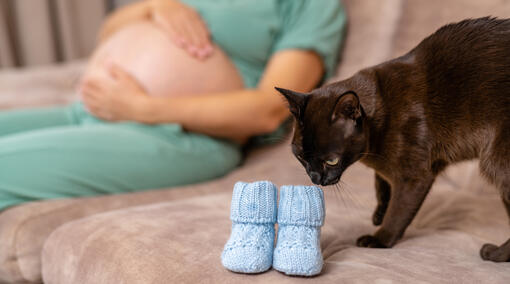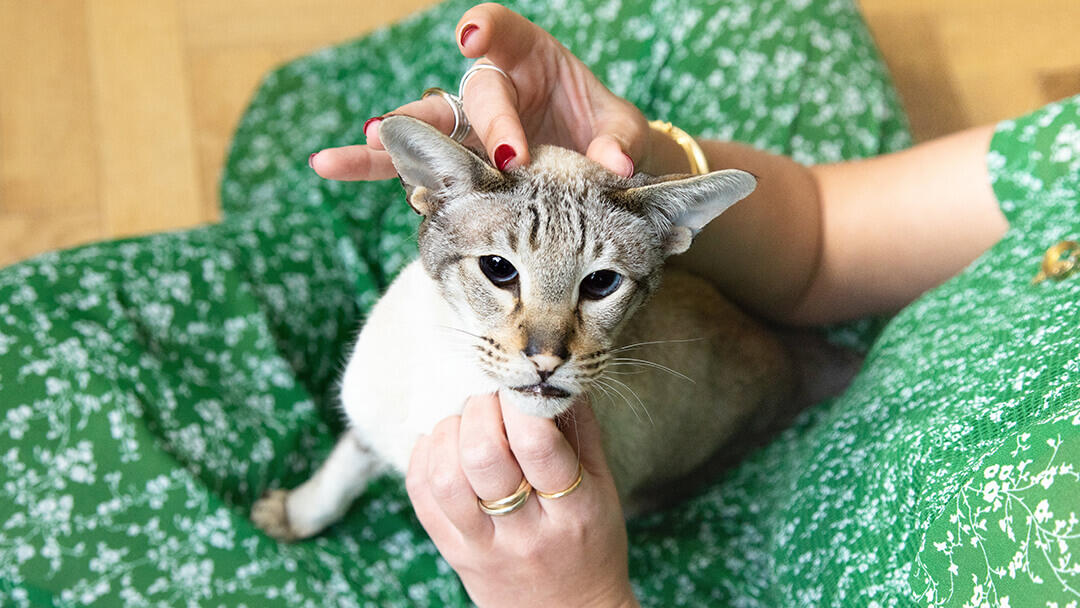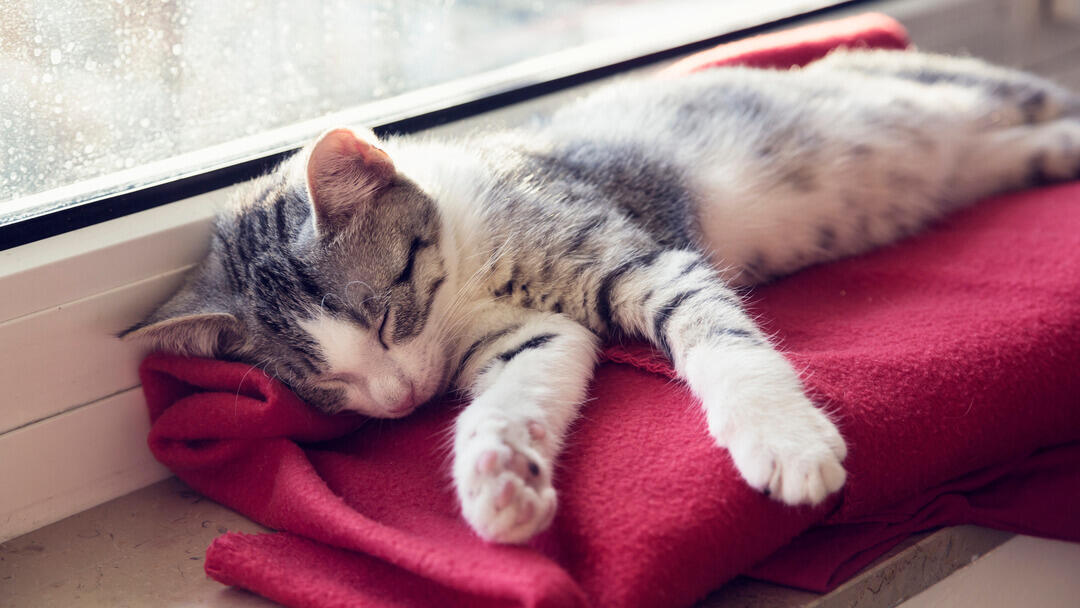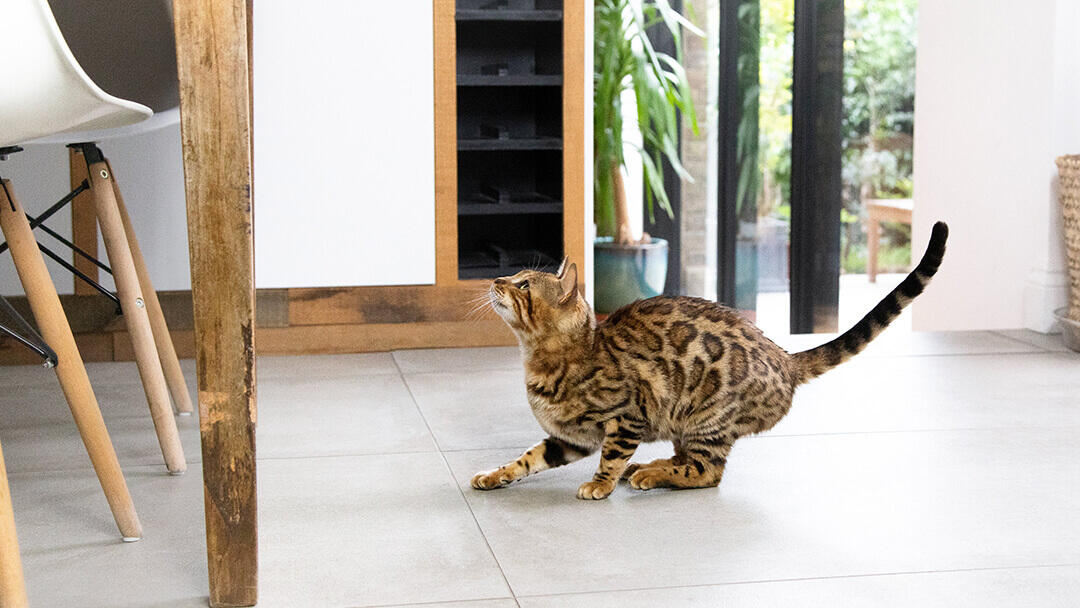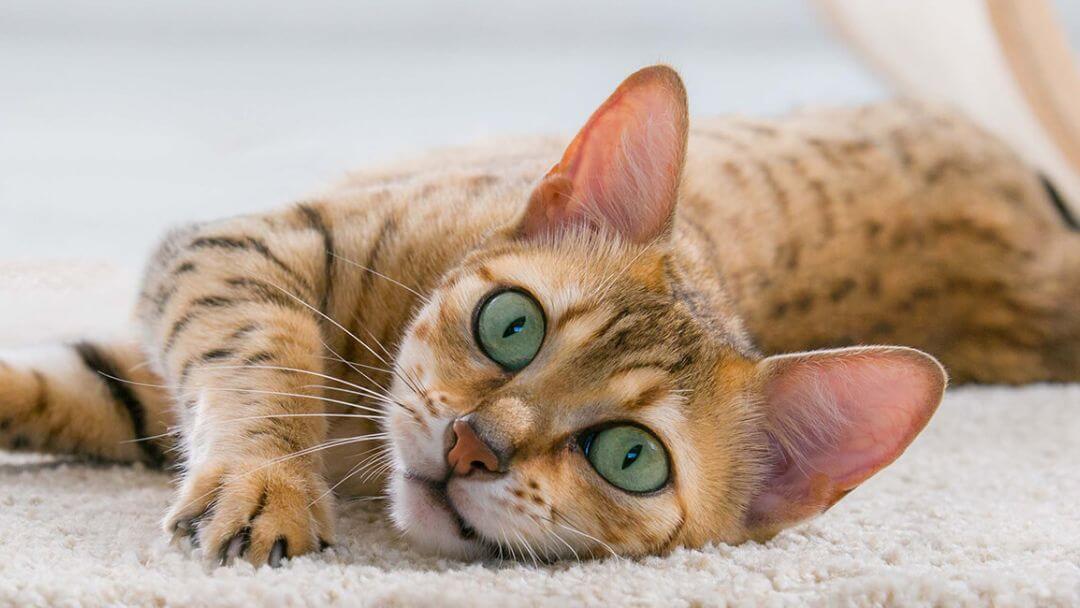How to Safely Introduce Cats and Babies for the First Time

Having a baby is an exciting time but it’s also a huge disruption for the entire household. And this of course includes your cat.
Cats like familiarity and predictability in their routine and in their environment. They bond to their home often as much as they do with their people, and they do not like change. A baby, and everything that comes with it, is very definitely a big change! So here is how to make sure the first baby-cat meeting goes smoothly.
How to introduce a cat to a newborn?
Knowing how to introduce your newborn to your cat can be a tricky task, especially when you don’t know where to start. This is, even more the case when it is your first child, as up until now your cat hasn’t had to share you and your attention with anyone else, and everything is as new for them as it is for you.
The good news is that you have plenty of time from discovering you are pregnant to bringing your baby home so with some planning and preparation, you can gradually prepare your cat to accept the new arrival and even welcome some of the changes this will bring.
Learn more about kitten socialisation with our helpful guide.
When introducing a newborn to a cat it helps if you take some time to understand why this is such an upheaval for your cat as, it’s only when you can consider things from their point of view, that you can help to make them feel happy and secure. The secret to helping your cat accept their new role as a feline aunt or uncle is preparation and making as much as possible familiar for your cat in small, gradual steps.
Here are a few things to consider when thinking about how to prepare your cat for the new arrival:
- While we think that it is dogs that have the best sense of smell, cats also have excellent noses and use scent to help them feel safe and secure – often more than most owners consider. They will rub their faces on items around the house - and on us - leaving their scent on them so they know what things are ‘theirs’ or are known to them, so, therefore, are ‘safe’. With a baby comes a whole host of new things - such as decorating the baby’s room, new furniture, the cot, a pram, toys etc. All these are unknown and to your cat, don’t smell right!
- Then of course there is the baby itself. To a cat, a baby doesn’t smell like any human they know! They smell of milk, nappies, baby wipes and a whole host of other things that your cat doesn’t recognise.
- As well as their smell being different, babies make some very strange noises - all of which can be worrying for your cat.
- It’s not only your cat’s environmental security that is affected by a new baby - it’s also their attachment to you. Suddenly overnight your routine has changed, and you are no longer as available for ‘cat time’ as you were, as you are focussed on the new demands of parenthood. While you are going to be occupied with your new baby, remember that your cat still needs your love and your attention.
- Start to consider basic common-sense hygiene precautions and get into the habit straight away - such as washing your hands after feeding your cat or cleaning litter trays, making sure flea and worm treatments are up to date in advance of your baby’s arrival, and finding ways to keep the baby’s room as a no-go area for your cat.
Tips for preparing to introduce your cat to a newborn before the baby arrives
This preparation will ensure that there are no sudden and stressful changes to your cat’s routine - and when the baby comes home, they are far more likely to accept them without too many problems. There are a lot of things that are likely to change for your cat when the new member of the family arrives such as:
- When and where they get fed
- How much attention they get from their person
- And there might also be parts of the house that the cat may no longer be able to visit
Start planning the baby’s nursery slowly and calmly
Start any decoration of your baby’s bedroom as early as possible so changes to the house happen gradually. Buy furniture and equipment one at a time so your cat can become familiar with them in their own time.
Introduce new scents and sounds
Try and make these new things ‘smell right’ by gently rubbing a soft towel or a cloth along the sides of your cat’s face while they are relaxing with you then rubbing it around the furniture and baby equipment.
Play very quiet baby sound effects so your cat gets used to hearing the noises that come with a baby.
Give your cat their own space
Make sure your cat’s feeding bowls and litter tray are somewhere quiet, out of reach of a crawling baby but still easily accessible. If this means moving them, do that long before the baby comes home.
Don’t forget your cat's needs
As you are not going to be as available to your pet for a few months, think about ways to add stimulation for your cat into their life that does not necessarily involve you. This could include giving them different heights or textures (a climbing frame or cat activity tree) so they can indulge in their natural climbing behaviours as well as giving them a new vantage point to watch the baby but stay safely out of the way), interactive food dispensing toys, extra cat scratching posts, and places to access window sills so they can watch outside. All these things add interest to your cat’s life but they also help build your cat’s confidence.
Think about enrichment feeding opportunities too – this could be anything from feeding mats, food dispensing toys – anything to make life more interesting.
Schedule some cat play time into your routine too – and try to make this at a time when your cat is at their most active but that the baby is likely to be sleeping.
In theory, you can add a cat to your household if you have a baby - but both take up a lot of time! The very first thing to ask yourself is if this really is the best time to take on either a kitten or an adult rescue cat, both of which will need a lot of your attention - especially in the first few months. Most new parents have enough to do with their human arrival to even contemplate a new feline one too!
Far better to wait a little while until the demands of parenthood become more manageable, and then if you still want to, think about bringing a cat into your lives.
New baby - shall I get a kitten or cat?
The first decision is whether you are going to take on a kitten or an adult. There are advantages and drawbacks to both.
First of all, a kitten that is brought up around young children will probably grow to be more tolerant of them and enjoy their company. But kittens are a lot of work and are a big commitment. An adult cat may be less work but also may be less accepting of a young sometimes noisy family - and some rehoming centres will not place a cat in households with young children, viewing it as too stressful. Others will view each family and each cat as individuals and match you accordingly, so you may be able to find a rescue cat who has come from a busy home and who will fit perfectly into your life.
Tips on how to prepare to introduce your newborn to a cat
Once you have found your new feline companion, do some preparation - and some shopping - before they come home.
Make sure your cat has their own space to escape to
Cats like lots of different places to sleep in, and knowing how much space your cat needs is important. So make sure they have plenty of options both close to the family but also in more peaceful areas when they need some quiet time. The cat will need an ‘escape route’ so if family life is getting too noisy or overwhelming, they can take themselves off somewhere quiet. Stair gates in doorways are perfect for this - as the cat can get through them but your baby and small children can’t!
Decide which rooms in the house are going to be out of bounds. Make sure those doors are ‘catproof’!
Choose a quiet and safe location for their feeding and toilet stations
Decide where your cat will be fed. This should be away from noise and disruption and somewhere your child doesn’t (or won’t) have access.
Litter trays if used should be set up somewhere quiet, with easy access for your cat, away from food bowls and somewhere your children will not have access (again, stair gates can be invaluable here).
Make sure you adhere to their needs
Provide things for the cat to climb on and scratch on - both for stimulation and to be able to observe what is going on from a safe height. In the case of cat trees or climbing/activity frames, make sure these are attached to the wall so neither your cat or your child can pull them down.
Supervise the interactions between the cat and the child
While children are young, all interactions between the cat and your child need to be supervised closely. Most cats will either be mildly curious about babies or just avoid them. But babies and toddlers can grab and cats can scratch. You want to avoid both.
Teach kids to be gentle with all pets
Once your baby is old enough to begin to be more interested in the cat, you can teach them from the very beginning to be gentle and quiet around your cat to ensure they grow up to be the best of friends.
Introducing cats and newborn babies doesn’t need to be a challenge, as long as you prepare and set yourself and your home the right way, you can ensure the introductions will be as smooth as possible.
Now that you know all about how to introduce a newborn to a cat, why not take a look at how to teach children to care for cats and dogs, next?


